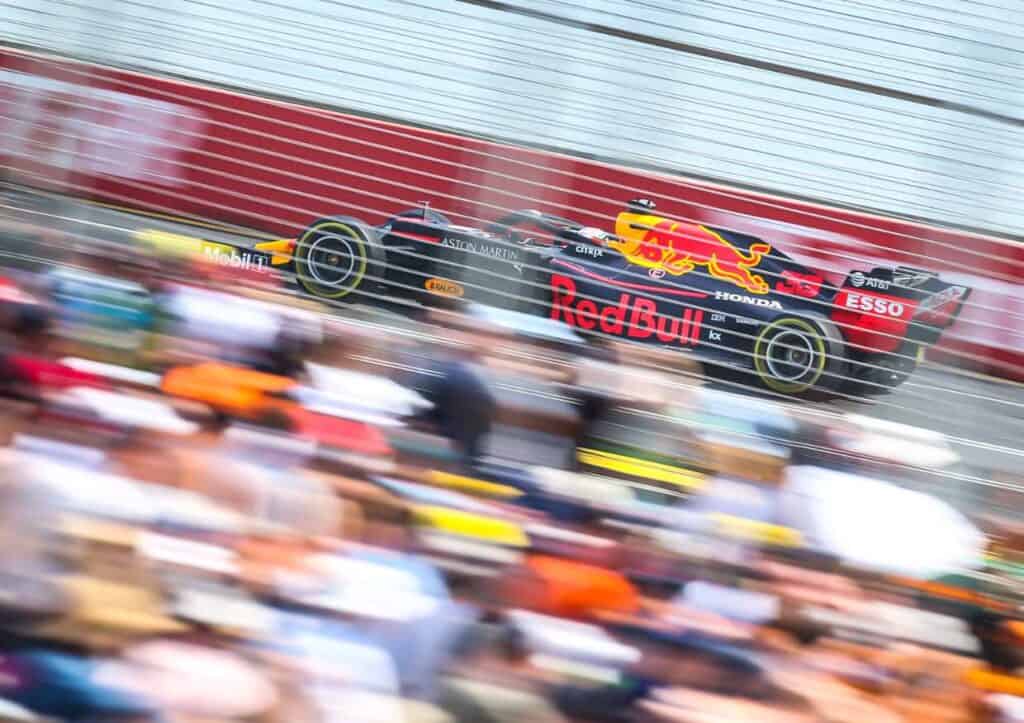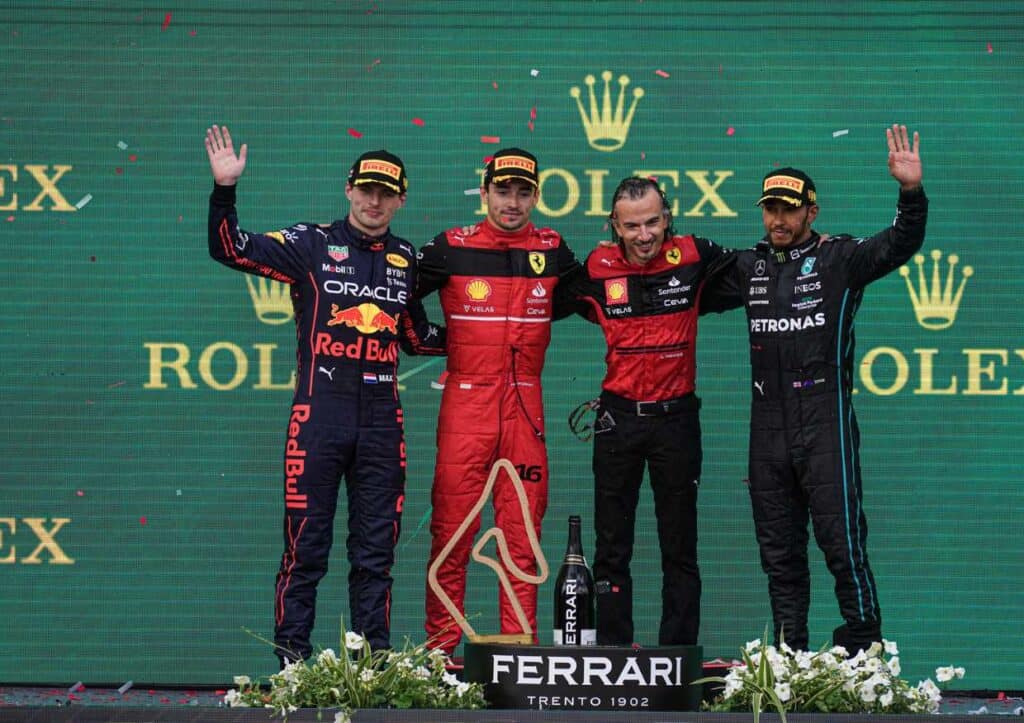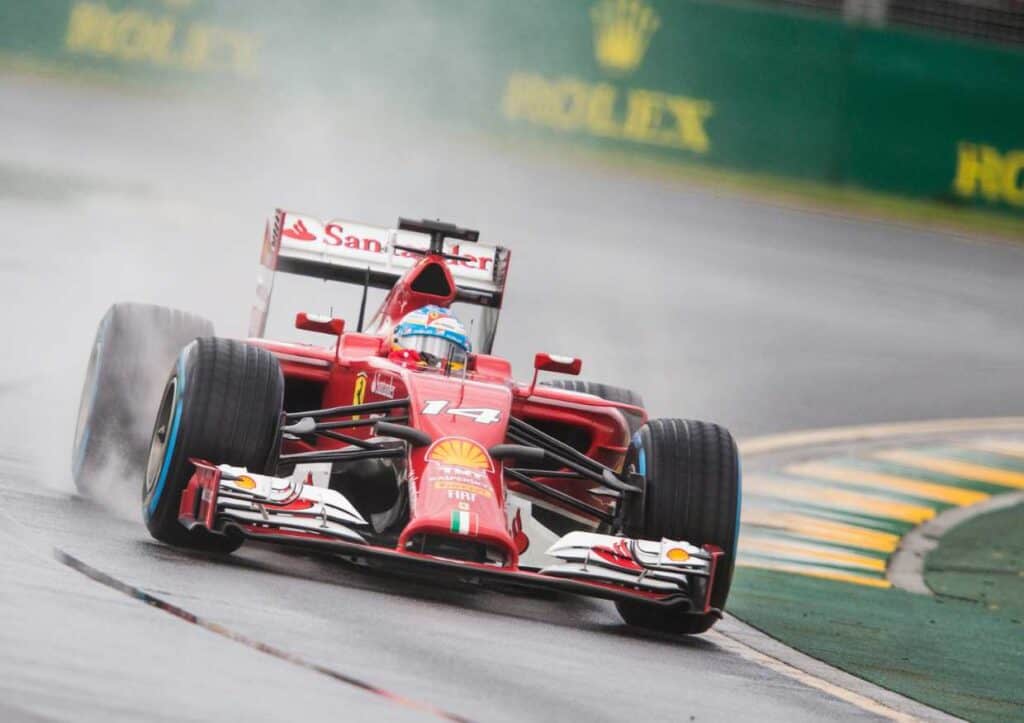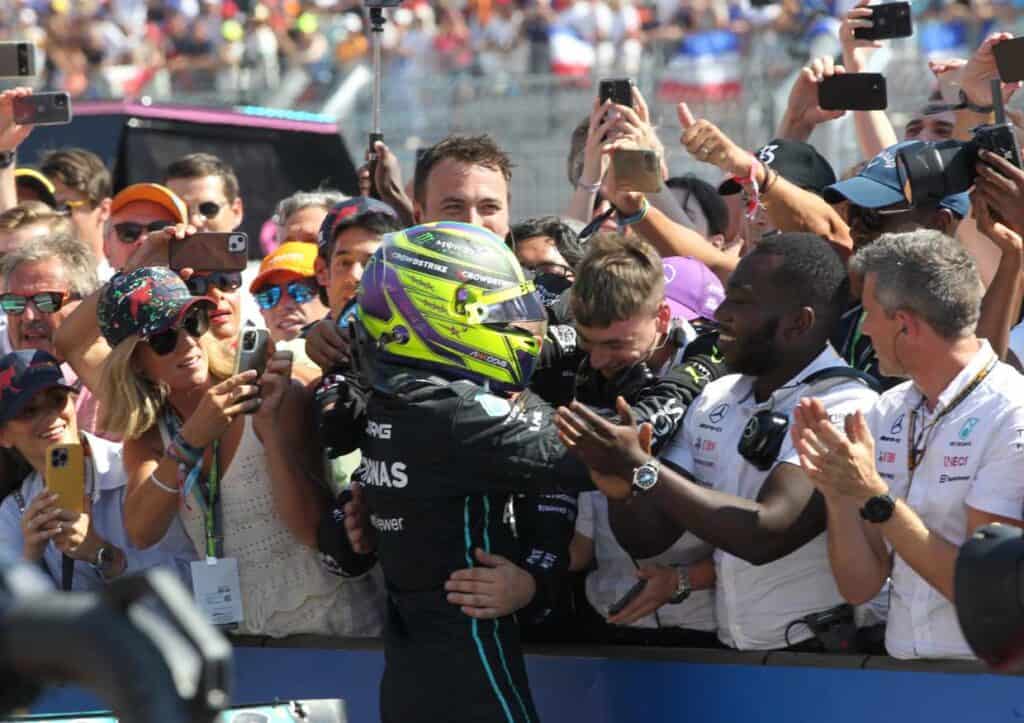Formula 1 is rapidly becoming one of the world’s most watched sports, and with the Netflix show “Drive to Survive” bringing the drama off the track into a whole different perspective, here are the things you may not know about F1 racing.

The 2023 Formula One series kicks off on March 5th for the 73rd season in Bahrain. The nine-month-long season will be 23 races scheduled worldwide, including three in the US, Miami, Austin, and the inaugural Las Vegas Grand Prix (a night race down the infamous Las Vegas strip), and a race in Canada and Mexico for North America. There will be six nighttime races this season, all culminating with the gripping final race in Abu Dhabi.
F1’s roots go back to the late 1920s and the ’30s from European Grand Prix Championship. But the official FIA, the governing body for the sport, established the standardized racing rules in 1946 and it’s become one of the worlds most popular sports. The first Formula 1 championship race series was established in 1950, and continues to reign supreme as the world’s most prestigious and expensive auto racing competition, with teams spending in excess of $100 million a year, including $12 to $15 million on each competition car.

The most iconic F1 racing circuit is an intricate road course winding its way through the historic narrow streets of Monte Carlo. Monaco is considered the crown jewel in motor racing; in line with the prestige and glamour of the exotic location, this famous area isn’t just for the high stakes of James Bond. And many of the rich and famous dock their yachts along the waterfront for spectacular views of the race.
As with all made-for-TV dramas, the episodes of “Drive to Survive” on the air aren’t all there is to the story; the show is a season behind in racing and covers only some of the intricacies of the sport. Air fry some chicken wings, catch up on the qualifying laps and let’s get ready for some racing.
1. They Start Young
Although it looks splashy on TV, the path to driving for a Formula 1 race team starts at an early age, often in the elementary years in competitive karting, to develop the essential skills for racing. From there, the young drivers must prove themselves through subsequent open-wheel racing series like Formula 3, then Formula 2, where talented drivers are recruited for teams.
However, for some of the young drivers, it’s in their blood as they come from notable racing families. For example, the father of the current World Champion, Max Verstappen, Jos Verstappen, raced in F1 from 1994 to 2003.
Other Notable Father-Son F1 Drivers
- Nikko and Keke Rossberg (both World Champions)
- Michael and Mario Andretti
- Damon and Graham Hill (both World Champions)
- Mick and Michael Schumacher (at one point rumored to be the Stig on BBC’s “Top Gear”)

2. There have Been Feuds Throughout the History of Racing
The feud between Lewis Hamilton and Max Verstappen is not the first major feud. It’s not even Hamilton’s most infamous; he has frequently feuded for position against his teammates, including Fernando Alonso and Nikko Rossberg. Before he duked it out against the up-and-coming Verstappen, Hamilton and Sebastian Vettel carried an on-track feud up through the ranks of Formula 3 into their F1 careers when Vettel drove for Ferrari. But as the reigning record-holder with seven World Championships, it’s easy to tag him as the rival.
Iconic Formula 1 Feuds
- Niki Lauda vs. James Hunt — This is such a famous rivalry that it was made into a movie titled “Rush” in 2013, starring Chris Hemsworth and Daniel Bruhl
- Ayrton Senna vs. Alain Prost
- Hill vs. Schumacher
Dive into these amazing stories on One37PM.com.
Even though the competition exists on the track and off, these drivers travel the world together, train together, and risk their lives every week alongside one another on the track. It takes trust and skill from each, and upon Vettel’s retirement after the 2022 season, they rallied for an unforgettable farewell dinner to give respect to his outstanding career.
3. It’s Not Just a European Sport
Although F1 is currently gaining popularity in the United States, there have been more than 50 American drivers throughout the sport’s almost 75-year history. The most famous is Mario Andretti after winning the 1978 Formula One World Championship.
Other Notable American F1 Drivers
- Dan Gurney
- Phil Hill
- Logan Sargent is on the 2023 roster for Williams
But it’s not just the drivers; Haas is a current F1 American team owned by Gene Haas, famous in the world of Nascar. But prior American teams include Parnelli Racing (1974–1976) and Haas Lola (1985–1987), owned by Carl Haas. However, with F1s recent popularity in the American market, there’s speculation that two US teams will join the competition in the coming years, including Cadillac with Michael Andretti and Ford collaborating with Red Bull.
4. The Rules Change
From season to season, the rules presented by the FIA (Fédération Internationale de l’Automobile) change, making it so much more than a race, but the ultimate engineering competition. It’s not just first, second, and third place across the checkered flag. Rules affect the power and aerodynamics of the vehicles. As well as tire compounds and hybrid technologies used to recover energy.
Recent changes to the rules revamped the entire aerodynamics of the cars, making for a dramatic 2022 season, helping the cars follow closer, and making for a more dramatic race with more passing opportunities. But the changes also forced many teams to make significant adjustments throughout the season as drivers and teams had to navigate issues with ground effects causing “porpoising” (uncomfortable bouncing within the car on long straightaways or at high speeds).

5. Although it’s a Lot of Money, it’s Not Limitless
Some teams had a bigger budget than others and in years past, could and would spend up to $500 million a year on whatever needed to manufacture the best cars. To even the playing field, in 2021, a cost cap was implemented. For the 2023 race season, a team can only spend $135 million, which includes both cars on each team, their parts, and all upgrades along with necessary research and development. There are other prohibitive cost regulations regarding the engines and other components of the sport.
Travel costs, driver salaries, and wages of the top three highest-paid staff members are not included in that budget, along with a myriad of other expenses.
6. It’s Not Every Man for Himself—F1 Is a Team Sport
The drivers earn points for their position at the end of the race. These points tally up and make an aggressive chase for the drivers to become World Champions.
But Formula 1 is a team sport with over $900 million in prize money to be divided up upon the Constructors Championship; it is a points race unto itself that tallies the score of the finishing position of both drivers on each team for every race. Other points are calculated for the number of poll positions (first place in qualifying) and fastest lap during each race. Combined, these numbers make the scores for the Constructors Championship. Although a driver may not win the first-place trophy, they can score strategic points for their team with these variables.

A Few Fun FAQs About Formula 1 To Help You Win Trivia Night
- The fastest speed recorded in a Formula 1 race was 372.5 kilometers per hour, set by Valtteri Bottas in 2016.
- The average Formula 1 car has approximately 14,500 components.
- The current engine used in Formula 1 is a hybrid turbo V6 internal combustion engine with a maximum permitted RPM (revolutions per minute) of 15,000.
- The average Formula 1 driver will lose up to 3 kilograms of weight during a single Grand Prix race.
- The fastest pit stop time recorded in Formula 1 was 1.82 seconds, set by Red Bull Racing in 2019.
- The average Formula 1 car generates around 1050 horsepower, more than double the power of a typical road car.
- Formula 1 cars can corner at speeds of up to 4.5 g-forces, which is nearly five times the force of gravity.
- Pay attention to the opening footage, as Formula 1 often customizes the opening credits of each race with unique details.
- A keen eye will also catch design details in the racer’s helmets each week, from tributes to significant events, social causes, and locations.
Follow the full race season and highlights at Formua1.com, and if you were lucky enough to grab tickets to the first-ever Las Vegas Grand Prix, make sure to plan a whole weekend of visiting speakeasies and even some picture-worthy free things to see while in Sin City. Otherwise, the best seat in the house is the one in your own living room.